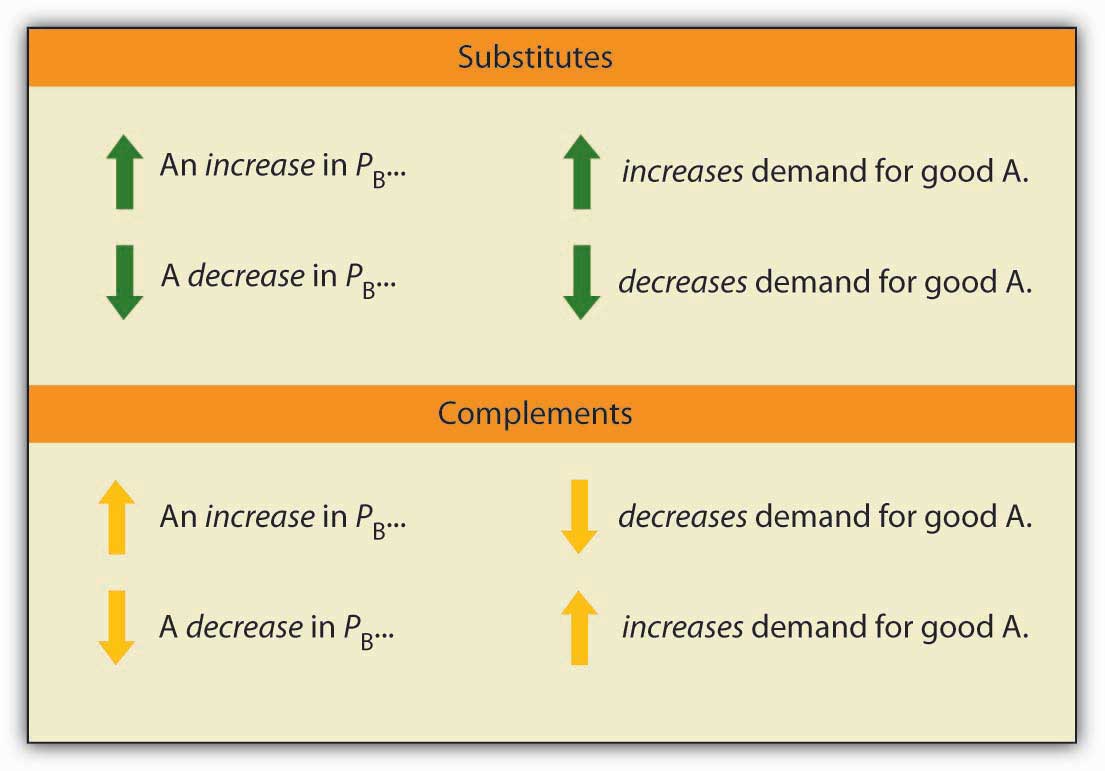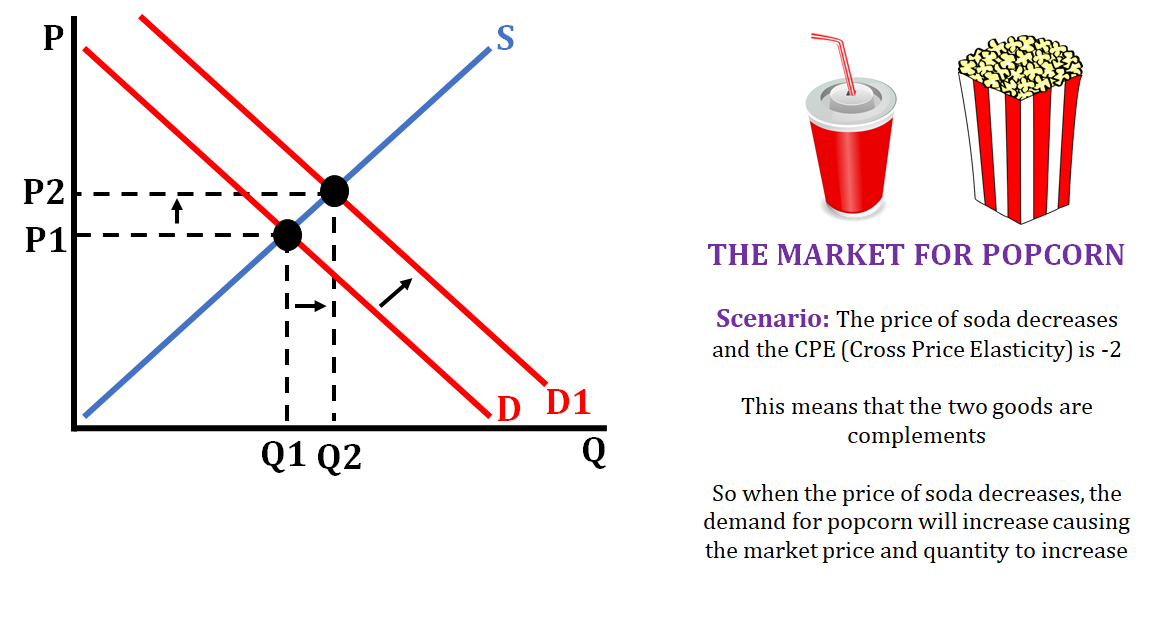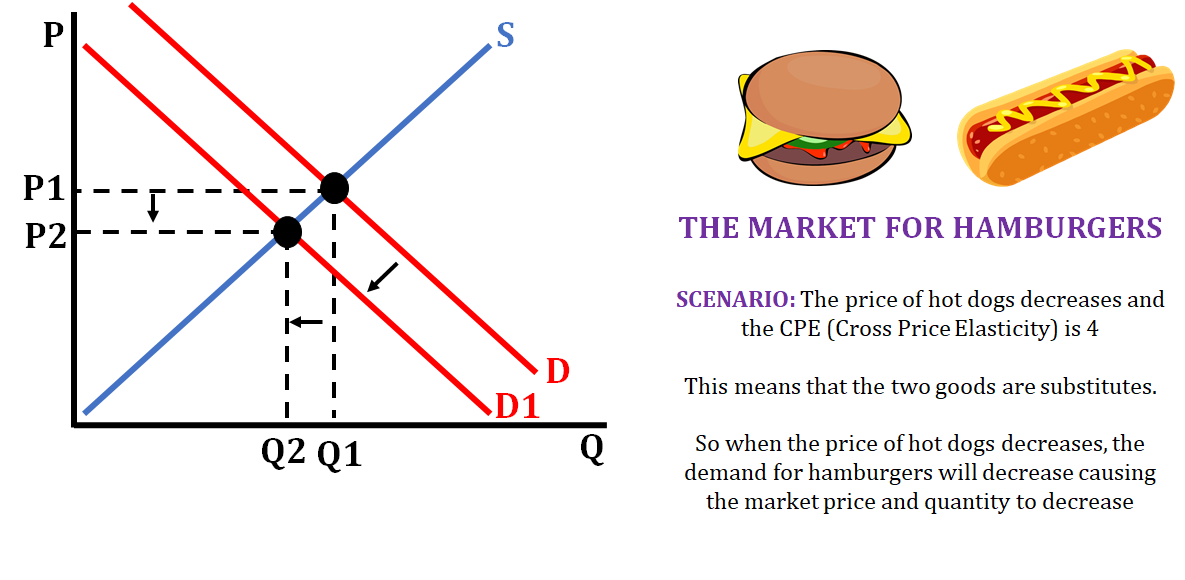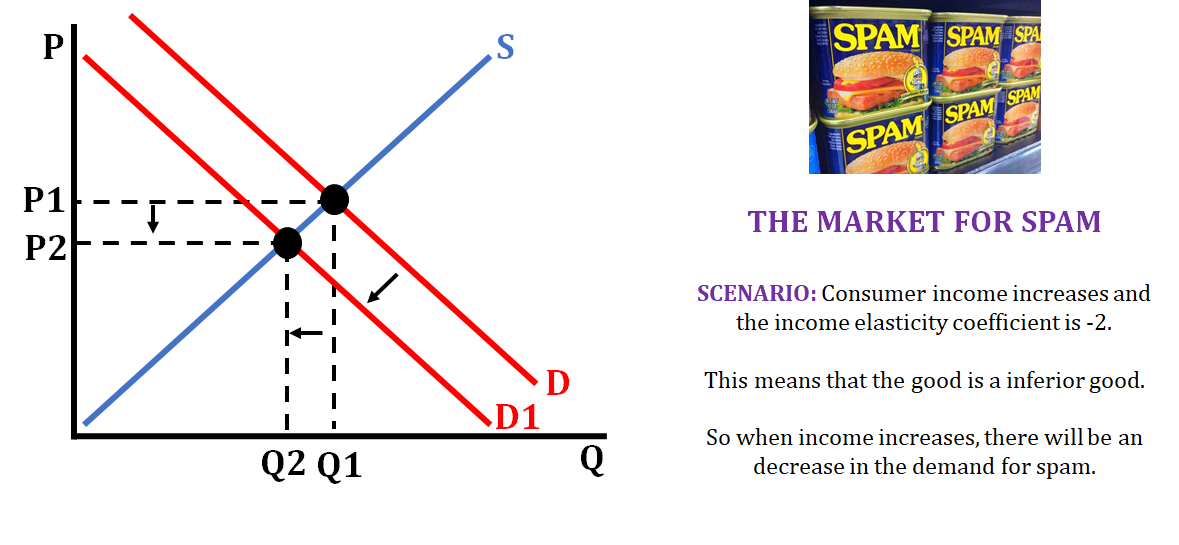J
Jeanne Stansak
dylan_black_2025
AP Microeconomics 🤑
95 resourcesSee Units
Other Types of Elasticity
So far, we've only covered price elasticities of both demand and supply. As a refresher, elasticity as a broad concept describes the sensitivity of one variable to another. For our two price elasticities, this means relating the sensitivity of quantity demanded/supplied to changes in price. However, the change does not have to be in price. This unit discusses two more measures of elasticity: income elasticity and cross-price elasticity, which will help us better understand what type of good a product is.
Income Elasticity of Demand
As the name implies, income elasticity of demand is a measure of the sensitivity of quantity demanded to changes in income. The major question then, is "when income rises/decreases a certain percent, does quantity demanded change proportionally, proportionally more, or proportionally less?"
Before we dive into the math, let's define some terms:
A normal good is a good that, when income increases, demand also increases. This is the case for most goods.
An inferior good is the opposite: when income increases, demand decreases. Some examples of this are things like ramen noodles and bus tickets. When income increases, we may move to better ramen or a taxi.
Fun fact! There is also a type of good called a giffen good, which has an upward sloping demand curve. This isn't covered nor necessary for AP Micro, but is a neat caveat to what we've already learned!
Let's see how to calculate income elasticity now:
The formula for income elasticity looks similar to other elasticities: Ei = %ΔQd / %ΔI, where I is income.
Income elasticity can show us whether a good is normal or inferior. If Ei is positive, that means that an increase in income leads to an increase in Qd, meaning the good is normal. If Ei is negative, that means that an increase in income leads to a decrease in Qd, implying that the good is inferior. If Ei is zero, the good is called a sticky good. This means that a change in income has no effect on quantity demanded.

Cross-Price Elasticity of Demand
The second alternative type of elasticity is called cross-price elasticity. This elasticity describes the sensitivity quantity demanded for one good - called good A to the price of another good, good B.
Cross-price elasticity is used in particular to determine if two goods are related as substitutes or complements (or neither). As a refresher, here's the relationship between substitutes and complements:

An easy way to understand these is to use examples. For example, water and soda may be substitutes, so an increase in the price of soda will lead consumers to substitute towards water, increase demand for water, and vice versa. Conversely,
The formula for cross-price elasticity is as follows: Eda,b = %ΔQda / %ΔPb
This tells us how the quantity of good A changes as the price of B changes. If Eda,b is positive, the goods are substitutes, since an increase in price of one good leads to an increase in quantity demanded for another (ie. consumers have substituted towards the other good). If Eda,b is negative, the goods are complements, which can be seen with similar reasoning. If Eda,b is zero, the goods are completely unrelated.
This type of elasticity helps us answer questions like:
- If the price of Pepsi increases, what will happen to the demand for Coca-Cola, a substitute good for Pepsi?
- If the price of milk decreases, what will happen to the demand for cereal, a complementary good to milk?
Calculating Cross-Price Elasticity of Demand
The formula used in calculating this type of demand elasticity is very similar to price elasticity of demand. The formula and rules are:
Sample Problem: Complements

Sample Problem: Substitutes

Image from publicdomainvectors.org Image from publicdomainvectors.org
Income elasticity of demand is the measurement of how sensitive the market is to a change in consumers' disposable income (money we can spend or save after taxes and other essential expenses). This measure of elasticity shows if a certain good is normal or inferior. A normal good is typically a good we buy when income increases, such as luxury items, new clothes, or fancy meals. An inferior good is a good we typically buy when our income decreases, such as used cars, thrifted clothing, and Ramen.
This type of elasticity helps us answer questions like:
- If consumers' income levels increase, what will happen to the demand for iPhones, a normal good?
- If consumers' income levels decrease, what will happen to the demand for thrift store clothing, an inferior good?
Calculating Income Elasticity of Demand
The formula used in calculating this type of demand elasticity is very similar to price elasticity of demand. When calculating this type of elasticity, we DO NOT drop the negatives. The formula and rules are:
Sample Problems
If a 4% increase in consumer income leads to a 1% increase in the demand for pencils than that means that the income elasticity coefficient is 0.25 (1/4). Since the coefficient is positive it means that pencils are a normal good.
A 4% increase in consumer income leads to a 1% increase in the quantity demanded for pencils. What type of good are pencils?
- Answer
- Normal good.
- Explanation
- The income elasticity coefficient is +1% / +4% (remember positive vs. negative matters here!) which equals 0.25. Since the coefficient is positive, pencils are a normal good.
A 12% increase in consumer income leads to a 10% decrease in the quantity demanded for used textbooks. What type of good are used textbooks?
- Answer
- Inferior good.
- Explanation
- The income elasticity coefficient is -10% / +12% which equals -0.83. Since the coefficient is negative, used textbooks are an inferior good.
Image from publicdomainvectors.org
Because the coefficient is positive, we identified an iPhone as a normal good. Since normal goods are goods that we typically buy when our income increases, we would demand more iPhones when our income goes up. As shown on the graph ago, the demand curve shifts right.

Image from flickr
Because the coefficient is negative, we determined that the Spam is an inferior good. This means we will buy less of it when our income decreases. This is shown by a leftward shift of the demand curve. Businesses can use the concept of income elasticity to determine under which conditions individuals are more likely or less likely to buy their products.
Browse Study Guides By Unit
💸Unit 1 – Basic Economic Concepts
📈Unit 2 – Supply & Demand
🏋🏼♀️Unit 3 – Production, Cost, & the Perfect Competition Model
⛹🏼♀️Unit 4 – Imperfect Competition
💰Unit 5 – Factor Markets
🏛Unit 6 – Market Failure & the Role of Government
📝Exam Skills: FRQ/MCQ

Fiveable
Resources
© 2023 Fiveable Inc. All rights reserved.
